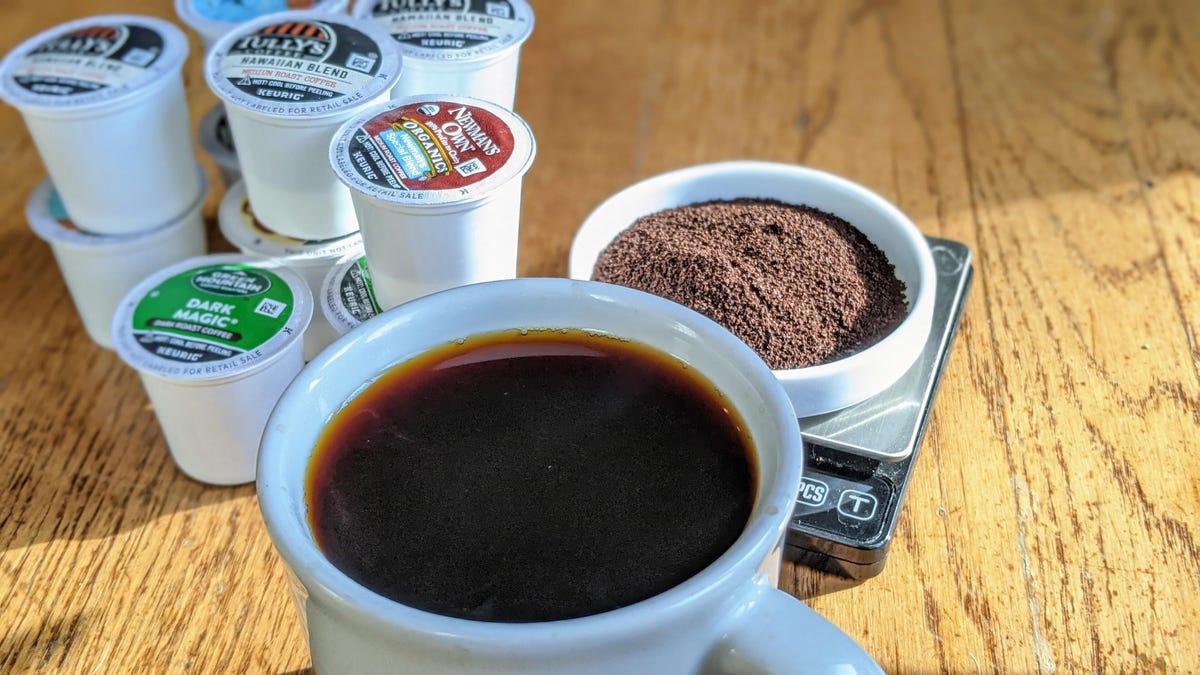 Why You Can Trust CNET
Why You Can Trust CNET Keurig coffee: 4 tips to make it taste better
Get the best coffee you can from your pod-based Keurig coffee maker with these tips.
Keurig coffee makers are ridiculously convenient. Drop in a pod, press the button and seconds later you have a steaming cup of joe in your hands. Quality and flavor, on the other hand, are not Keurig's strengths. Pods can spend months on store shelves or in your pantry, a far cry from what you'll get with beans that are freshly roasted and ground. Worse, Keurig K-cups contain less grounds than needed for brewing ideal java.
That said, there are definitely things you can do to get the most out of your machine. From preheating it and reconsidering your water supply to choosing the right settings and accessories, this guide has tips you'll certainly want to try.
Check your tap water quality with a TDS meter.
Use water that's pure
You can't make a good cup of coffee without using clean, pure water. One way to confirm the quality of your water supply is to check with your local utility. That's no problem here in Louisville, Kentucky, where the city water company takes its mission seriously. After all, superb bourbon requires water that's top-notch.
Another way to check your tap water is to test it yourself. The easiest method is to use a TDS meter. These handheld devices measure the total amount of dissolved solids, or TDS, in water by checking for electrical conductivity. The more impurities present, the more conductive a water sample will be.
According to the Environmental Protection Agency, the maximum TDS level for drinking water should not exceed 500 parts per million. Anything higher is associated with water hardness, staining and a salty taste.
A quick reading at my kitchen tap came in at a solid TDS of 185 ppm. While that number is slightly outside the Specialty Coffee Association's brewing regulations, it's well below EPA guidelines. To get that value down even further I could use bottled or filtered water.
Preheat the machine
Extracting flavor from coffee grounds is a tricky job, so before you brew your first cup of the day, it's a good idea to give your Keurig machine some assistance by preheating it. The reason why is simple: Good coffee requires water that's hot enough to extract flavor the moment it hits the grounds -- ideally between 195 and 203 degrees F (90-95 C).
The easiest way to help that to happen is by running a pod-free brew cycle first. It sounds like a minor step, but it makes a difference. Water that exited my Keurig machine's second cycle was a full 10 degrees hotter than the first time around.
There was only 11.1 grams of ground coffee in this K-cup.
Brew it stronger
One key failing of Keurig coffee pods is that they contain a relatively small amount of coffee. For example, my Keurig Donut Shop K-cup came with 11.1 grams (0.39 ounces) of grounds. For a standard 12-ounce cup of joe, I typically use roughly twice as much (20 grams). Anything less than that tastes weak and watery.
Brewing a 12-ounce cup from one Keurig pod makes weak joe.
If your Keurig brew gives you multiple cup size options, choose the smallest available to eke out a more concentrated brew. For instance, a 12-ounce cup brewed from one Donut Shop pod had a low TDS percentage of 0.8%. When I made a smaller, 8-ounce cup with an identical K-cup, I measured a TDS percentage of 1%.
That's still below the SCA's golden cup standard (1.15-1.35% TDS), but even so, it was an improvement over cup No. 1 -- and one that I could taste.
Put fresh coffee in your pods
One last, simple way of getting around the deficiencies of disposable K-cups is to skip them altogether and get a reusable one that you fill with your own coffee grounds. Plenty of companies sell them -- even Keurig hawks its own model. There are lots of different styles to choose from, too. You'll find everything from inexpensive plastic K-cups all the way up to fancy, stainless steel K-cups.
You'll no doubt brew better coffee than before with an accessory like that (not to mention the environmental benefits). For best results, get a good coffee grinder and grind your own beans right before you brew, and use about twice as much of the grounds as you'll find in a typical K-cup. Your taste buds will thank you.


